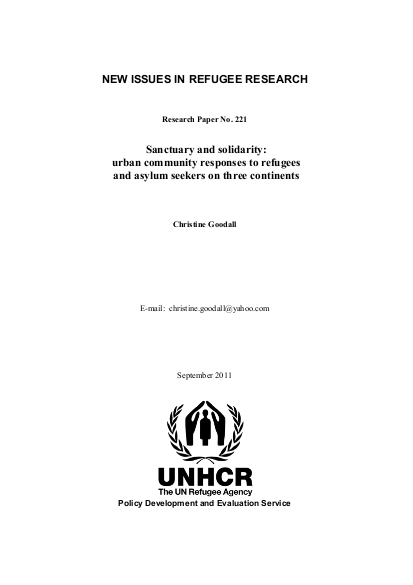
The paper will also draw attention to a common thread of conflict that can be identified in places where such community responses take place. It will show that such conflicts arise between different layers of government, between secular laws and moral and religious codes, between nuanced facets of political expediency, and between the competing needs of different groups. This conflictual character marks out many of the responses identified, and suggests that this is a sphere towards which further attention should be directed in the future if their role is to be more completely understood.
The paper takes a comparative approach, examining responses to vulnerable migrants across a very wide geographical area. As Dancygier (2010) points out, there is a lack of comparative work on host community and new arrival relations and conflicts. She points out that most work is constructed in the form of quite detailed case studies. Whilst these are indeed valuable, it is also important to investigate linkages between sometimes outwardly disparate situations, which may have more in common from which we can learn than might at first be obvious.
Following on from this, the paper will also take a broad view of the categories of persons to whom communities respond either with support or negativity, adopting the term ’vulnerable migrants’; this category includes refugees and asylum seekers, but also undocumented migrants at risk of deportation or other punitive responses. It is intended to signify those presenting themselves in another country as being in dire circumstances and in need of refuge, that need arising from a broad range of reasons.
Resource collections
- UN Habitat - Urban Response Collection
- Urban Response - Urban Crisis Preparedness and Risk Reduction
- Urban Response Collection - Community Engagement and Social Cohesion
- Urban Response Collection - Economic Recovery
- Urban Response Collection - Environment and Climate Change
- Urban Response Collection - Housing, Land and Property
- Urban Response Collection - Urban Crisis Response, Recovery and Reconstruction
- Urban Response Collection - Urban Resilience